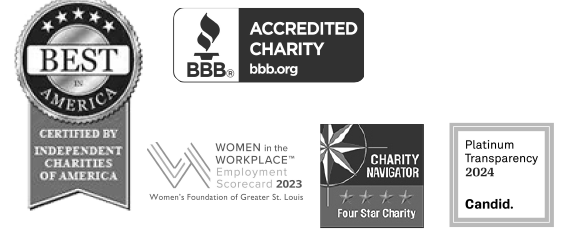
Strengthening Child Nutrition Programs is Essential to Addressing Child Hunger
Each day child nutrition programs improve millions of children’s overall nutrition, health, development and educational achievement. The pandemic related increase in food insecurity highlighted the importance of federal child nutrition programs for the well-being of children, as well as the economic security of their families. Hunger in Missouri and nation-wide spans across urban and rural areas. Food insecurity disproportionately affects children of color due to systemic racism and kids in rural communities with limited infrastructure. These programs are an important step towards health and educational equity for children and economic mobility for families. Child nutrition programs are successful, cost-effective investments in the health and development of children across the nation and state. Now is the time for lawmakers to address child hunger by strengthening child nutrition programs.
Policy & Programs Reviewed Through Child Nutrition Reauthorization
Traditionally, Congress revisits the legislation governing federal child nutrition programs every five years in an omnibus bill titled the Child Nutrition and WIC Reauthorization Act, a process better known as Child Nutrition Reauthorization (CNR). The reauthorization amends two laws foundational for child nutrition programs, the 1946 National School Lunch Act and the 1966 Child Nutrition Act.
CNR typically encompasses the policy and funding structure for nearly all child nutrition programs:
- School Breakfast Program (SBP)
- National School Lunch Program (NSLP)
- Child and Adult Care Food Program (CACFP)
- Summer Food Service Program (SFSP)
- Special Milk Program
- Supplemental Nutrition Program for Women, Infants and Children (WIC)
- WIC Farmers Market Nutrition Program (FMNP)
- Farm to School Program and Grants
Recent Child Nutrition Reauthorization Efforts
The most recent reauthorization was passed under the Healthy, Hunger-Free Kids Act of 2010 and expired on September 30, 2015. Efforts by Congress to review and reauthorize the child nutrition programs began and ultimately failed in 2015 and 2016. Fortunately, most programs are permanently authorized and have permanent authorizations of appropriations for their main functions. This is true for NSLP, SBP, CACFP, and SMP. As for SFSP, WIC, and WICFMNP, authority for the programs themselves is permanently authorized, but their appropriations authorization expired in 2015. Since then, funding for each of these programs and for states’ administrative expenses has been maintained through the Congressional annual appropriations process.
Highlights from the 2010 Child Nutrition Reauthorization
The Child Nutrition Reauthorization process serves as an opportunity for Congress to improve and strengthen child nutrition programs. The 2010 CNR included the most significant changes to child nutrition programs since the 1970s, including:
- Expanding access to school meals by creating the Community Eligibility Provision, an option in SBP & NSLP that allows eligible schools to provide free meals to all students.
- Provisions requiring the USDA to set higher nutrition quality standards for meals served in schools and pre-schools, including competitive foods like vending machines and a la cart vendors.
- A six cents per meal reimbursement increase for school lunches that meet the new nutritional standards.
- Requiring states transition WIC from a paper voucher system to Electronic Benefit Transfer (EBT) by October 1, 2020.
- Simplifying the application paperwork for parents and schools, making it easier to enroll or automatically certify eligible students.
The CNR Legislative Process
CNR is conducted through hearings held by the Senate Committee on Agriculture, Nutrition and Forestry and the House Education and Labor Committee. These authorizing Committees seek information about how well the child nutrition programs and WIC are working. It is a chance for government agencies, members of Congress, advocates, companies, agriculture interests, researchers, medical groups and the public to identify existing issues, gaps, or areas for further research in the child nutrition programs and suggest improvements based on evidence and preferences. Authorizing Committees then deliberate on current and future provisions.
Typically, members of the committees and sometimes members outside of them introduce “marker bills” early on in an attempt to influence the Committee Chairs responsible for drafting the omnibus bills. After the bills are drafted, marked up, amended and voted on by their committees, they are sent to the House or Senate floors for further debate and action.
Once passed by their respective chambers, the bills are sent to a conference committee named by party leaders to negotiate and produce a “conference report.” The final bill must then be passed one more time by both the House and Senate before it is sent to the President to be signed into law.
Upcoming CNR Priorities
With millions of children and families still affected by the pandemic, now is the time for Congress to maintain and build upon the critical gains made in the 2010 reauthorization. Operation Food Search is urging Congress to prioritize the passage of legislation that expands program access and supports participation, especially by historically underserved communities; ensures nutrition quality and culturally appropriate foods; and streamlines program administration and operation.
–Written by Madison Eacret, OFS coordinator of public policy



